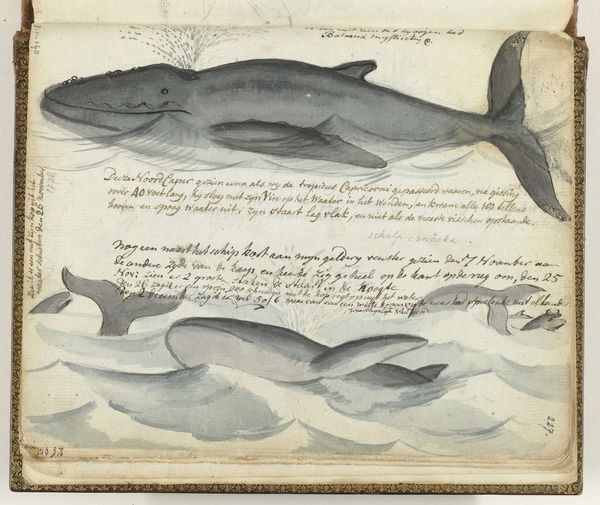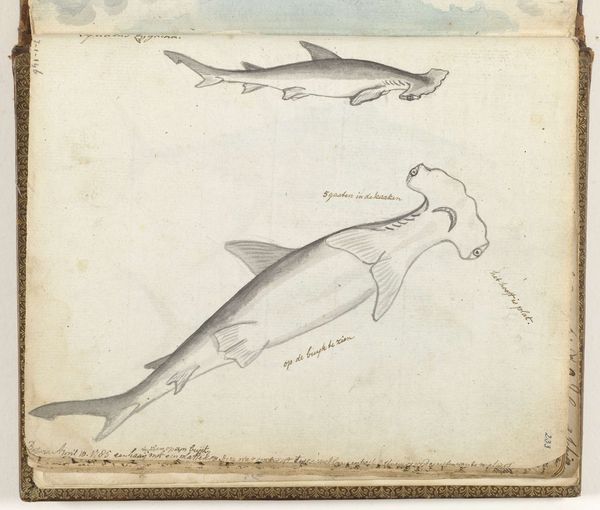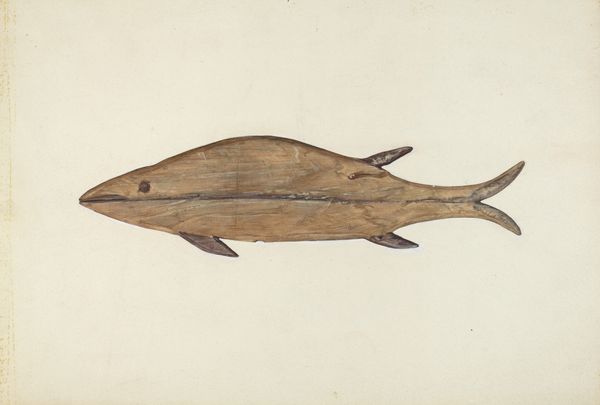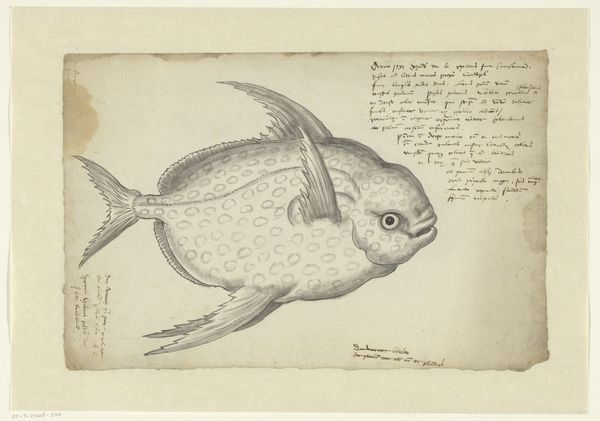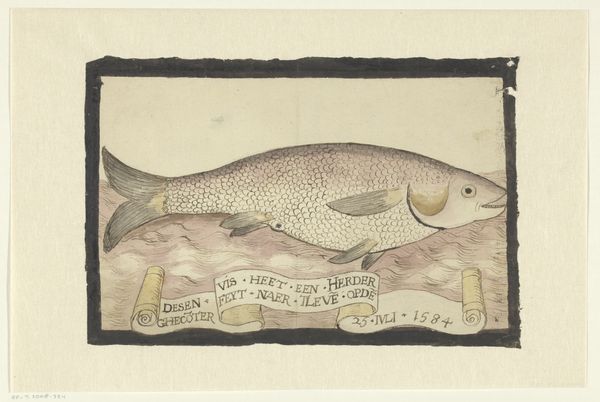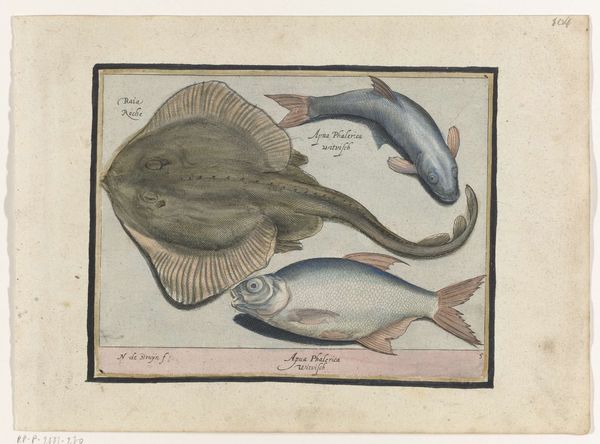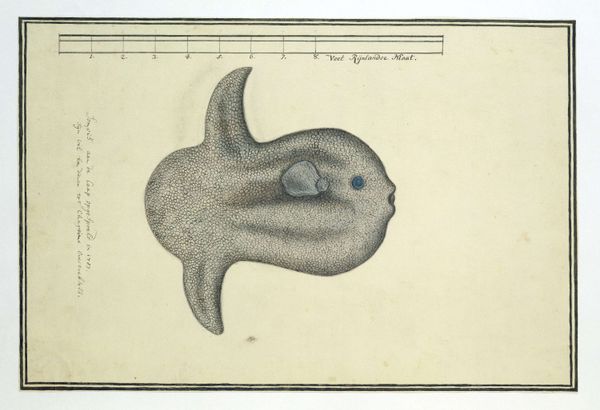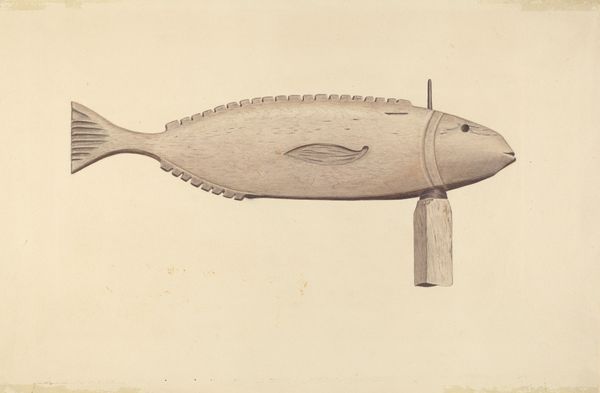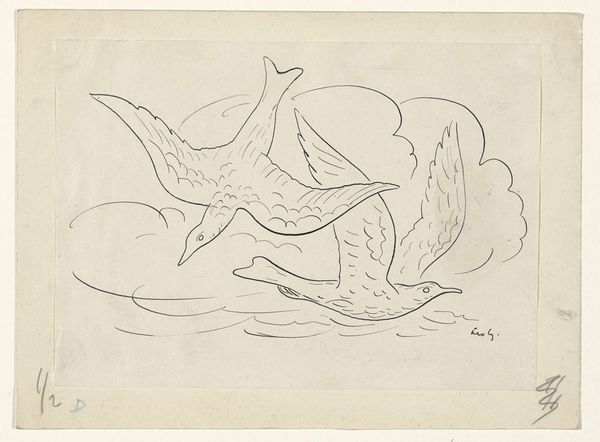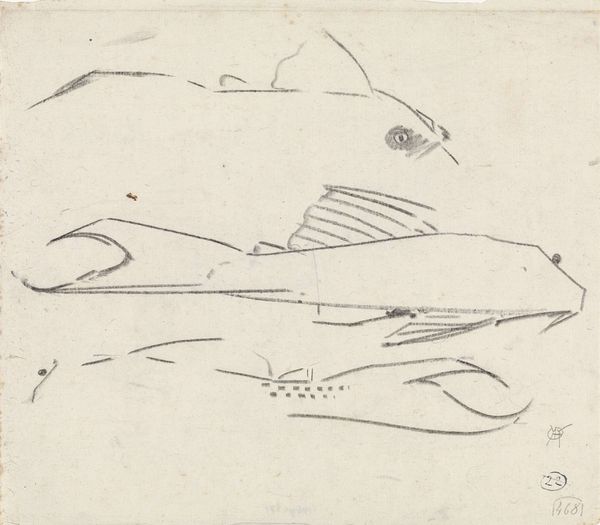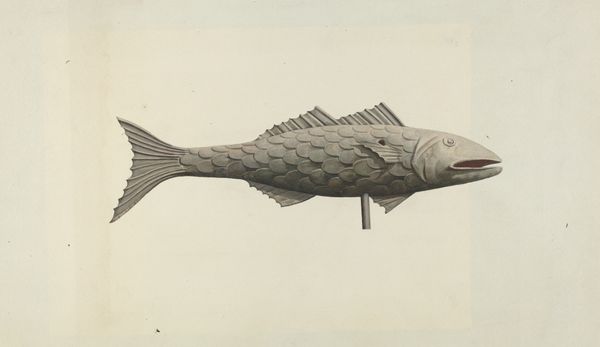
drawing, watercolor, ink
#
drawing
#
aged paper
#
toned paper
#
medieval
#
sketch book
#
figuration
#
11_renaissance
#
personal sketchbook
#
watercolor
#
ink
#
coloured pencil
#
ink colored
#
sketchbook drawing
#
watercolour illustration
#
sketchbook art
#
watercolor
Dimensions: height 300 mm, width 392 mm
Copyright: Rijks Museum: Open Domain
Curator: This drawing, "Buttlenose whale (Hyperoodon rostratus)" by Adriaen Coenen, dating from 1584, uses ink and watercolor on paper. It's charming, but a bit naive, wouldn't you say? What can you make of this interesting portrayal? Editor: I am drawn to the use of such rudimentary materials to convey knowledge, but how do we place the whale within the context of artistic production and broader societal implications? Curator: Exactly! Consider the materials available to Coenen, and how he’s using them. Ink, watercolor, readily accessible, practical. It wasn't about lavish display but documenting the natural world as he understood it. What kind of labor goes into capturing, observing, and rendering this creature? And who was consuming these images? Editor: So, it's less about the finished product and more about the means and circumstances of its creation. It challenges the traditional view of art as simply aesthetic, by emphasising its utility within scientific pursuits, right? I notice the handwritten script along the borders of the paper; would that play a part in Coenen’s creative choices here? Curator: Precisely! The text anchors the image within a specific time and place. How does the inscription change the reading of the image for you? Editor: It makes it feel functional, tied to knowledge sharing. Curator: Indeed. Coenen used affordable materials, which facilitated both knowledge production and a more democratic access to such information, challenging our present conceptions of exclusivity. Editor: This has really transformed how I view not just the piece but similar historical works. Thanks. Curator: My pleasure. Examining the "how" and "why" of its making unveils a whole other world.
Comments
No comments
Be the first to comment and join the conversation on the ultimate creative platform.
